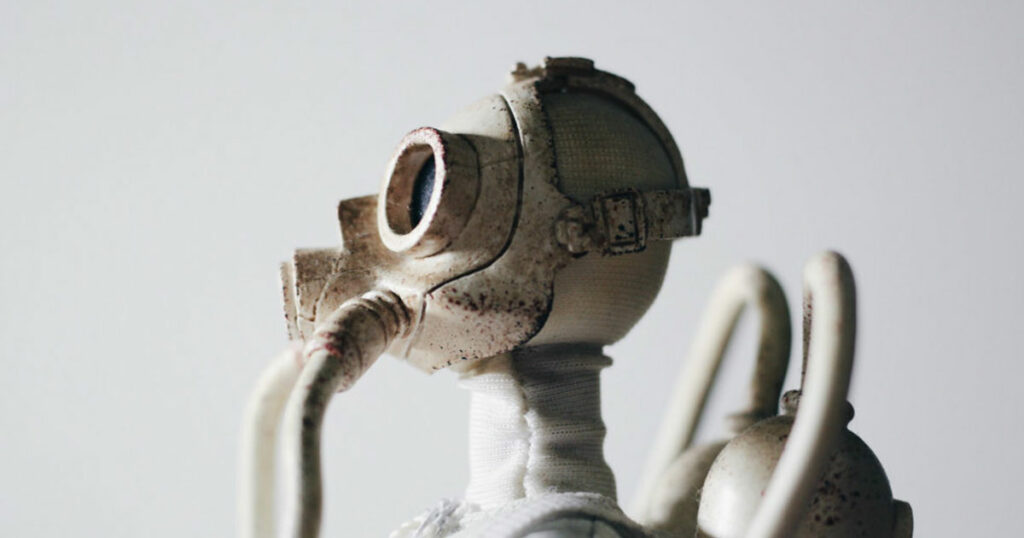Transhumanism is the movement that awaits a revolutionary breakthrough in technology where a human personality is uploaded into a robotic body so that the human might live beyond bodily death.
Such a goal might seem too absurd and far-fetched. But transhumanism has its champions in the world of technology. Ray Kurzweil, a high profile transhumanist who joined Google as director of Engineering in 2013, is optimistic that man will completely meld with machines to achieve “technological singularity” and the age of partially robotic transhumans by 2045. Kurzweil predicts a new civilization–call it a social utopia–in which the lines that divide human and machine, reality and virtual reality, will be blurred. Humanity will achieve immortality through a kind of disembodied robotic existence.[1]
How can it happen?
Transhumanists see the brain as a machine. The brain is like a computer, and the mind is like an operating system on a machine that run on bits of “information” stored on our neural structures. If man is merely machine, then why can’t a person’s “information”— his thoughts, emotions and personality—simply be uploaded onto another machine? Much of the ideas behind transhumanism are predicated upon advances in artificial intelligence, a field where computers are developed to “think” and process information just like human beings.
Hollywood is jumping on the bandwagon, popularizing the dreams of transhumanism. In the movie “Transcendence,” (2014) Johnny Depp plays Dr. Will Caster, a leading scientist in the field of artificial intelligence. He is also the target of anti-technology terrorists. The terrorists do him a favor by mortally wounding him and giving him the chance to be the subject of his own experiments with the help of his assistants and his wife. Will Caster’s body dies, but he lives on as a virtual personality. This is the telos, the goal, of transhumanism.
Understanding the goals
To understand transhumanism, we need to have a firm grasp on postmodernism, the prevailing philosophy of our age. Postmodernism operates from an atheistic worldview and sees human beings as merely the chance products of evolutionary development. Humanity is malleable and subjective, always evolving and changing. There is nothing permanent about humanity. Human beings are nothing more than social constructs, the sum total of our subjective experiences. [2]
Because of this philosophy of the body, postmodernism sees no ethical problem with augmenting our bodies. If we don’t like the bodies we were born with, our bodily characteristics can be changed. The field of bio-engineering gives parents the ability to shop for preferred genetic traits for their children. Human cloning, artificial wombs and genetically engineered populations are all possibilities on the technological horizon. Transgenderism is humanity’s triumph over “male and female he created them” (Gen. 1:27; Mattt. 19:4). Our bodies might have once constrained us. But postmodernism heralds the triumph over the limitations of our creaturely existence.
It is interesting how postmodernism shares the same beliefs and goals of the ancient heresy called gnosticism. Gnosticism sees the body as the prison-house of the soul. With gnosticism, the goal of life is to escape the body and be translated to a higher spiritual plane of existence beyond creaturely-ness. The body is merely a stubborn obstacle to be overcome. Transhumanism takes one giant leap beyond mere cosmetic adjustments to the body. It seeks a humanity that is unembodied, unencumbered by the limitations of our mortality. Like gnosticism, transhumanism seeks a body-less humanity.
What does this mean for Christians?
Why has the transhumanist movement gained such traction in intellectual circles? Because theist or atheist, we are fundamentally religious creatures. The notion that life ends at death might be intellectually satisfying, but such a hopeless belief can never satisfy our souls. Even atheists crave religion, crave an eschatology, crave a hope for a future. Transhumanism provides such a hope.
Transhumanism substitutes faith in technology for faith in God. If we don’t believe the story of the God who conquered death for us, transhumanism holds onto the hope that we can conquer death ourselves. But that hope is an illusion. The dream of uploading one’s mind onto a robot to achieve immortality is the mere fantasy of individuals looking for comfort that they will never find apart from the Gospel.
If transhumanism shares anything with Christianity, it is the belief that death is an enemy to be defeated. What transhumanism doesn’t share with Christianity is the belief that death is an enemy that has been defeated at the grave of Jesus Christ.
And that is precisely the answer Christianity should give to the religion of transhumanism—the true Gospel of the Resurrection. The transhumanists are on a search for an immortality, but that search is futile, as futile as our first parents who searched for life apart from God but found only death. But the futile endeavors of man are not futile to God. What man seeks to do, God has done. The Son of God has defeated death for us. Christ is risen, and our future resurrection with Him on the Last Day is secure (1 Corinthians 15). On the Last Day, what is mortal shall put on immortality, and we shall live with remade bodies in a remade earth for all eternity.
In view of the Gospel of the bodily resurrection from the dead, who needs the body-less humanity of transhumanism? Christianity proclaims an eternal future with a body—a real, human, creaturely body—immortal, restored and re-created in the image of the New Man, Jesus Christ, free of sin and death, to live with God forever.
In view of the Gospel promise, the dream of humans without bodies, of our minds being uploaded into robots so as to live forever, seems less like a dream, and more like a nightmare.
The Rev. Andrew T. Yeager is pastor of Zion Evangelical Lutheran Church, Garrett, Ind.
[1] Edward Feser, “Kurzweil’s Phantasms,” First Things, (April 2013).
[2] Brent Waters. From Human to Posthuman: Christian Theology and Technology in a Postmodern World. Ashgate Publishing, 2006.


